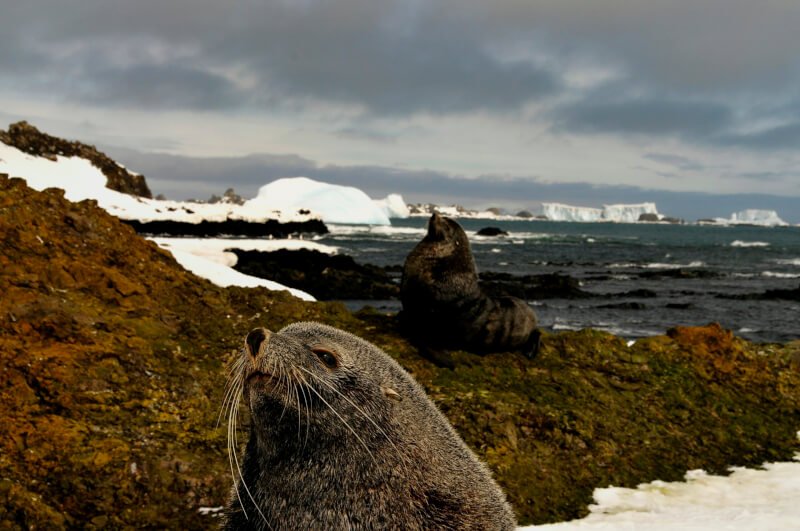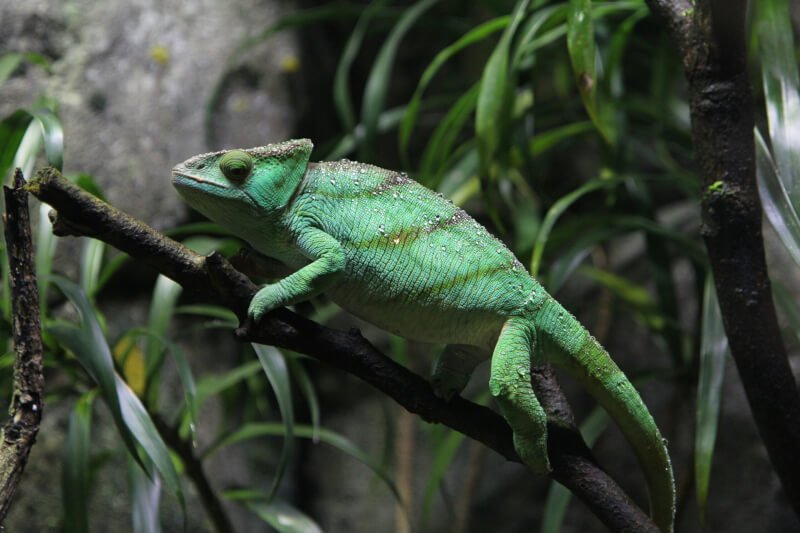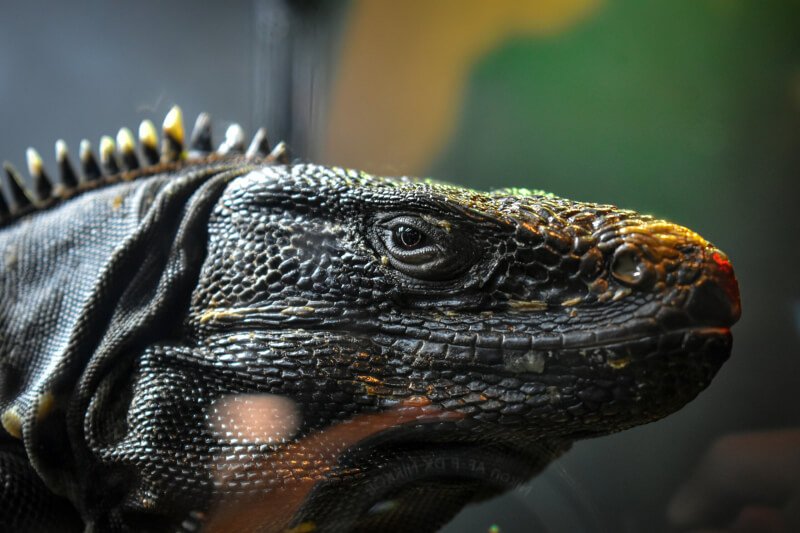Let’s dive into the fascinating world of reptile basking behavior! Have you ever wondered why reptiles spend so much time soaking up the sun? In this ultimate guide, we will explore the reasons behind this unique behavior and uncover the various ways reptiles bask to regulate their body temperature. From choosing the perfect basking spot to understanding the importance of UVB lighting, this guide will equip you with all the knowledge you need to create a comfortable and thriving environment for your scaly friend. So, grab your sunscreen and join us on this enlightening journey into the world of reptile basking!

Why is Basking Important for Reptiles?
The Importance of Basking for Reptiles
Basking plays a crucial role in the lives of reptiles, serving various vital functions. This behavior involves exposing themselves to direct sunlight or a heat source to regulate their body temperature effectively. Additionally, basking aids in digestion, immunity, and mental well-being. Whether in the wild or as pets, reptiles rely on basking to maintain optimal health and overall vitality.
How Basking Affects Reptile Health
Basking behavior directly impacts a reptile’s health in several ways. Firstly, by positioning themselves under a source of heat, reptiles can raise their internal body temperature to the level necessary for proper metabolic function. This optimal temperature range allows for efficient digestion, nutrient absorption, and overall physiological processes.
Furthermore, regular basking promotes strong immune systems in reptiles. Exposing themselves to sunlight, reptiles can absorb essential ultraviolet (UV) radiation that helps produce Vitamin D3. Vitamin D3 is critical for calcium metabolism, which is crucial for healthy bone growth and maintenance. A deficiency in Vitamin D3 can lead to various health issues, such as metabolic bone disease.
Basking as a Source of Vitamin D
Reptiles, unlike mammals, cannot produce Vitamin D3 within their bodies without the aid of external sources. Basking behavior enables reptiles to absorb sufficient UVB radiation from sunlight or specialized lighting, which triggers the synthesis of Vitamin D3 in their skin. This process not only contributes to the reptile’s calcium metabolism but also helps them maintain strong bones and a healthy immune system.
Basking and Thermoregulation
Thermoregulation is a fundamental aspect of reptile biology, and basking behavior plays a vital role in maintaining optimal body temperature. Reptiles are ectothermic, meaning their body temperature depends on external sources, unlike endothermic animals like mammals. By basking in the sun or under a heat source, reptiles can raise their body temperature, which is crucial for their physiological processes, activity levels, and overall well-being.
Factors that Influence Basking Behavior
Natural Habitat and Adaptations
Reptiles’ natural habitats and adaptations exert a significant influence on their basking behavior. Different reptile species have evolved to inhabit various environments, such as deserts, forests, or aquatic ecosystems. These environments offer different access to sunlight and temperature gradients, which shape their basking preferences and patterns.
Temperature and Light
Temperature and light are essential factors that influence reptile basking behavior. Reptiles rely on external heat sources to regulate their body temperature effectively. The intensity and availability of sunlight or artificial light, as well as ambient temperatures, play a crucial role in determining when and how long a reptile will bask.
Species-specific Differences
Each reptile species has unique basking requirements based on their natural behaviors, morphology, and evolutionary adaptations. Some reptiles may prefer a specific basking spot, while others may have more general preferences. Understanding these species-specific differences is vital when providing appropriate basking conditions for captive reptiles.
Environmental Factors
Environmental factors, such as the availability of suitable basking spots, the presence of predators, or competition for resources, can significantly influence reptile basking behavior. Reptiles may choose different basking locations within their habitat depending on these factors, ensuring their safety and optimizing their chances of success.
Signs of Basking Behavior
Raised Body Posture
One of the most common signs of basking behavior in reptiles is a raised body posture. When a reptile positions itself to bask, it often stretches its limbs and lifts its body off the ground or substrate. This posture maximizes their exposure to the heat source, allowing them to absorb the maximum amount of warmth and UV radiation.
Sunbathing Positions
Reptiles often adopt specific sunbathing positions to optimize their basking experience. These positions can include fully extending their limbs outwards, angling their bodies towards the sun or heat source, or even climbing to elevated platforms. By assuming these positions, reptiles ensure they receive the most direct sunlight or heat, effectively regulating their body temperature.
Preference for Basking Spots
Reptiles may display a clear preference for certain basking spots within their enclosure or natural environment. These preferred spots typically offer ideal temperature gradients, sufficient available heat, and UV radiation, and a sense of security. Observing your reptile’s choice of basking spot can provide valuable insights into their individual preferences and needs.
Cooling Down after Basking
After a basking session, reptiles often engage in cooling down behaviors. These behaviors may include moving to a shaded or cooler area, burrowing into the substrate, or seeking water sources. Cooling down helps regulate their body temperature and prevents overheating, ensuring their overall well-being.
Types of Basking Spots
Elevated Platforms or Logs
Elevated platforms or logs are popular basking spots for many reptiles, such as lizards and turtles. These raised surfaces provide a secure and elevated area for reptiles to bask, allowing them to soak in the warmth and UV radiation from a higher vantage point.
Rocks and Stones
Rocks and stones are natural basking spots commonly found in reptile habitats. Reptiles, such as snakes and iguanas, often seek out these surfaces as they retain heat and provide a stable platform for basking. Rocks and stones offer a variety of shapes, sizes, and textures that cater to different reptile preferences.
Thermal Gradient Areas
Thermal gradient areas replicate the natural temperature variations that reptiles would encounter in the wild. These areas consist of different heat sources, such as heat pads or lamps, strategically placed to allow reptiles to choose their preferred basking temperature.
Artificial Basking Spots
In captive environments, artificial basking spots can provide reptiles with the necessary heat and UV radiation. These can include heat lamps or bulbs, specialized reptile UVB lighting, or even heating mats or pads. Creating these artificial basking spots ensures that reptiles have access to the appropriate temperature and UV exposure necessary for their well-being.

DIY Basking Spot Ideas for Reptiles
Creating Elevated Platforms
To create an elevated platform for your reptile, you can utilize natural or artificial materials. Wood branches or platforms secured in the enclosure can offer a secure and elevated basking spot. Make sure the platform is sturdy and large enough for your reptile to comfortably bask on without the risk of falling.
Creating Rock Piles or Stacks
Creating a rock pile or stack within your reptile’s enclosure can mimic natural basking spots. Arrange rocks and stones in a way that provides different heights and angles for your reptile to choose from. Ensure the rocks are securely positioned to prevent any potential hazards or collapses.
Setting up Heat Lamps and Basking Lights
Heat lamps and basking lights are essential for providing the necessary heat and UV radiation. Install these lights above the basking area, ensuring they emit the appropriate spectrum of light for optimal reptile health. Follow the manufacturer’s instructions carefully and regularly check and replace bulbs as needed.
Utilizing Heating Mats or Pads
Heating mats or pads can be placed under a portion of the enclosure to create a thermal gradient area. These mats or pads provide a localized heat source, allowing reptiles to choose their preferred basking temperature within their habitat. Always use heating mats or pads designed for reptiles and follow safety guidelines to prevent any overheating risks.
Tips for Providing Ideal Basking Conditions
Researching Species-specific Requirements
Each reptile species has specific requirements for basking, including temperature ranges, lighting needs, and basking duration. Take the time to research and understand the specific needs of your reptile species, ensuring you provide the ideal basking conditions to promote their health and well-being.
Mimicking Natural Environmental Conditions
When setting up basking areas for your reptile, it’s crucial to mimic their natural environmental conditions as closely as possible. By replicating their natural habitat, including temperature gradients and UV exposure, you provide them with familiar and appropriate basking opportunities.
Maintaining Proper Temperature and Lighting
Regularly monitor and adjust the temperature and lighting in your reptile’s habitat to ensure they have adequate basking conditions. Using thermometers and light meters can help you accurately measure and maintain the appropriate levels. Make any necessary adjustments to provide an optimal basking experience for your reptile.
Offering Multiple Basking Options
Offering multiple basking options within the enclosure allows your reptile to choose from various suitable spots. This provides them with opportunities to find their preferred basking areas and increases their overall comfort and well-being. Different basking options can also simulate the natural behaviors and environmental conditions they would encounter in the wild.

Common Basking Behavior Problems
Lack of Basking Opportunities
Inadequate access to suitable basking spots can lead to various health issues and behavioral problems in reptiles. If your reptile doesn’t have access to appropriate basking spots, they may struggle to regulate their body temperature effectively, leading to lethargy, poor appetite, and overall decline in health. Ensure your reptile has ample basking opportunities within their enclosure.
Overexposure to Heat or Light
While basking is crucial for reptiles, overexposure to excessive heat or light can be harmful. Reptiles can suffer from heat stress or burns if exposed to temperature or light intensities beyond their tolerance level. Be vigilant in monitoring their basking area to prevent overexposure and provide appropriate cooling areas within their enclosure.
Inadequate Basking Temperatures
Maintaining proper basking temperatures is essential for your reptile’s well-being. Without the right temperature range, reptiles may not be able to properly digest their food, absorb nutrients, or carry out their physiological processes. Regularly check and adjust the temperature in their basking spot to ensure it aligns with their species-specific requirements.
Behavioral Issues
Basking behavior can be affected by various behavioral issues in reptiles. Stress, environmental changes, or even illness can disrupt their normal basking patterns. If your reptile exhibits significant changes in basking behavior, it is essential to investigate and address any underlying issues that may be causing these behavioral problems.
Understanding the Basking Schedule
Daily Basking Patterns
Reptiles often exhibit daily basking patterns that align with their natural circadian rhythms. They may have specific times of the day when they are most active and seek basking opportunities. Observing and understanding your reptile’s daily basking schedule can help ensure they have access to their preferred basking spots when they need them the most.
Seasonal and Circadian Rhythms
In addition to daily basking patterns, reptiles also experience seasonal changes in their basking behavior due to variations in temperature and daylight hours. Understanding these seasonal and circadian rhythms can help you anticipate and provide the appropriate basking conditions during different times of the year.
Changes in Basking Behavior with Age
Reptiles’ basking behavior can change as they grow and age. Young reptiles may require more frequent basking sessions and higher temperatures to support their rapid growth and development. As they mature, their basking needs may shift, allowing them to regulate their temperature more efficiently. Monitor and adapt their basking conditions as your reptile grows to meet their changing requirements.

Basking Behavior in Different Reptile Families
Lizards and Basking
Lizards are well-known for their basking behavior and often exhibit specific preferences for basking spots within their habitat. Different lizard species may have unique requirements, such as rock crevices, tree branches, or sandy areas. Providing varied basking options and temperature gradients is crucial for their overall health and well-being.
Snakes and Basking
While snakes are less commonly associated with basking behavior, they do engage in it to regulate their body temperature. Snakes often prefer basking on warm rocks, tree branches, or even on top of each other to maximize heat absorption. Understanding the specific basking preferences of your snake species is essential for their care.
Turtles and Tortoises: Basking
Basking behavior is particularly critical for turtles and tortoises, as it helps with thermoregulation and UV exposure. Aquatic turtles rely on basking spots, such as rocks or floating platforms, to dry off and warm themselves. Terrestrial turtles and tortoises also require access to basking areas, which often include elevated platforms or even natural vegetation.
Crocodilians and Basking
Crocodilians, including crocodiles, alligators, and caimans, are known for their extensive basking behavior. They often bask on riverbanks or logs, spending significant amounts of time exposed to sunlight. Basking not only aids in thermoregulation but also contributes to their metabolic processes and digestion.
Research and Scientific Insights on Basking
Studies on Reptile Basking Behavior
Numerous scientific studies have provided insights into reptile basking behavior, shedding light on the specific factors that influence their preferences and patterns. These studies help researchers and reptile enthusiasts better understand the needs and behaviors of various reptile species in both natural and captive environments.
Basking Preferences in Different Environments
Research has revealed that reptiles display different basking preferences based on their natural environments. Desert-dwelling reptiles may have higher basking temperature requirements, while forest-dwelling reptiles may seek out areas with more shade. Understanding these preferences aids in creating suitable basking conditions for reptiles in captivity.
How Basking Influences Reproduction
Basking behavior has been shown to have a direct impact on reptile reproductive processes. Studies have found that adequate basking conditions and exposure to UV radiation can enhance hormone production, contribute to successful egg development, and improve reproductive outcomes. Proper basking conditions are crucial for the health and reproductive success of captive breeding programs.
Implications for Captive Reptile Husbandry
Understanding reptile basking behavior and its significance has important implications for the husbandry of captive reptiles. By providing appropriate basking opportunities and conditions, reptile keepers can help ensure the physical and mental well-being of their reptile pets. Creating an environment that mimics their natural habitat and meets their individual needs is key to promoting their overall health and happiness.
In conclusion, basking behavior is of utmost importance for reptiles. It plays a crucial role in their thermoregulation, digestion, immune function, and overall well-being. By understanding the factors that influence basking behavior, offering suitable basking spots, maintaining ideal conditions, and considering species-specific requirements, reptile keepers can provide their beloved pets with an enriching and healthy basking experience. With proper knowledge and care, reptiles can thrive and display their beautiful natural behaviors in captivity.



